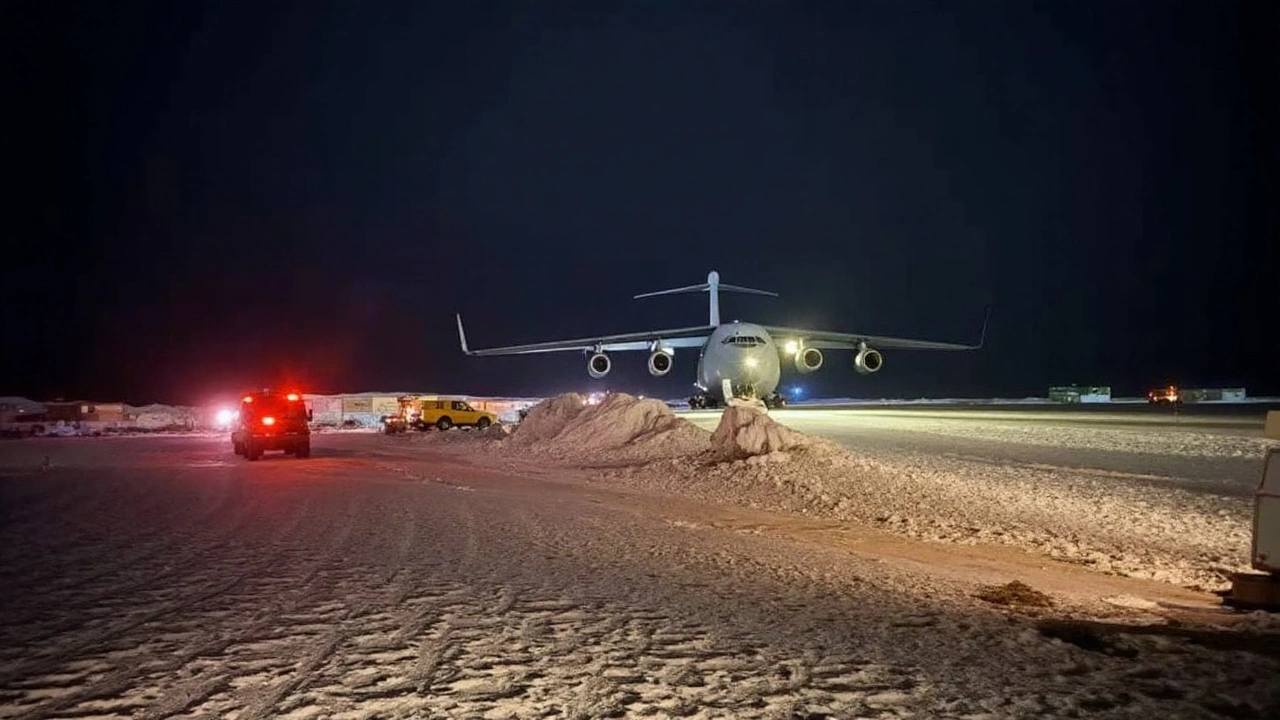Antarctica’s Midnight Rescue: Braving the Cold for Life
If you think winter drives are tough, try flying a massive military aircraft across the world’s coldest, darkest continent, where the sun hasn’t risen in weeks. That’s exactly what a Royal New Zealand Air Force (RNZAF) crew pulled off between August 6 and 7, 2025, when three Americans stranded at McMurdo Station in Antarctica needed emergency evacuation.
Most people can’t even imagine temperatures dipping so low that engines freeze, or what it’s like maneuvering a bulky C-130 Hercules through pitch-black skies, guided only by night vision goggles. Yet that’s what the RNZAF did during a relentless 20-hour ordeal. Picture this: thick darkness for thousands of kilometers, no options for emergency landings south of a certain point, and sudden Antarctic storms always lurking. Air Commodore Andy Scott, who commands the New Zealand air wing, laid it out bluntly — these missions don’t just ‘happen.’ Each decision, he said, is weighed carefully, because the margin for error is razor-thin.
So why all this risk? One American scientist needed urgent medical care beyond what McMurdo could provide. The other two were flown out as a safety measure—no one gambles with health this far from civilization. Once the U.S. National Science Foundation raised the alarm, the Kiwis got to work, prepping their legendary Hercules and assembling a crew up for anything.
But before the plane even took off, another Herculean effort was underway at McMurdo. The U.S. Winter Team rolled out heavy equipment to groom the ice airstrip, which had been battered by savage wind and chill. The runway had to be flawless — any cracks or misaligned snow could turn a landing from dicey to deadly.
This mission wasn’t just about precision flying. It was a masterclass in international teamwork, with both American and New Zealand teams swapping real-time weather updates, laying out contingency plans, and watching for that one moment of clear skies. Keeping the Hercules on course was a job for night-vision goggles, not autopilot. Imagine the tension in the cockpit, knowing there’d be no second chances once they crossed the point of no return.
Why Antarctic Ops Are a Whole Other Beast
Antarctica’s midwinter is more than just cold — it’s hostile. Temperatures dip so low that even high-tech gear can fail. There’s zero sunlight. Weather shifts in moments, with winds strong enough to turn vehicles sideways. And there are no cities, no hospitals, no backup plans.
Evacuating anyone in this environment means fighting not only the elements but also the permanent isolation. The fact that the runway had to be cleared by snowfall in total darkness, using only headlamps, shows how much grit and teamwork were involved. Air Commodore Scott stressed the mission’s heroism wasn’t just about flying but about everyone on the ground who made it work. Ground crews risked frostbite to prep the strip; rescue planners charted flight paths with relentless attention to the tiniest detail, scanning up-to-the-minute satellite data just to find a safe window for takeoff and landing.
These operations bring home how remote and vulnerable Antarctic research teams are. Medical emergencies don’t wait for good weather or easy travel. The combination of technical skill, nerve, and teamwork needed is rare—and invaluable for the scientific community staking its future on polar research. New Zealand’s daring evacuation stands as a reminder that, even at the bottom of the Earth, global cooperation and courage can pull off the impossible.
